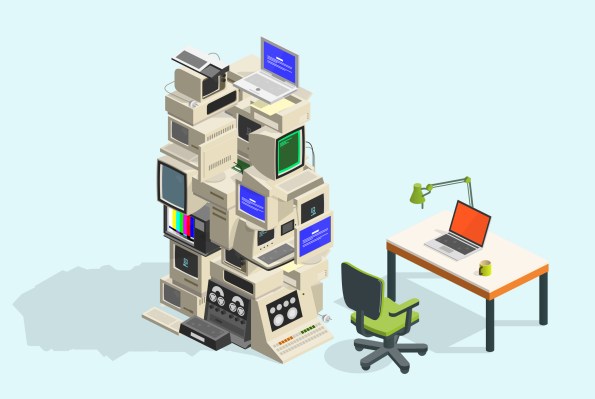We’ve been hearing about digital transformation for over a decade now, the idea that you have to modernize your systems for a more digitally centric world. What holds back digital transformation? Well, lots of things, from office politics to budget prioritization to inertia, but one big factor preventing companies from taking advantage of the latest technology could be the age of their tech stack.
Companies steeped in another concept known as technical debt — a growing cost for not fixing structural problems in tech systems — could be limiting their ability to take advantage of newer technologies. And at some point, the cost of that debt could become so high, companies could be left in the dust altogether.
In the last 15 years, we’ve seen a number of meaningful technological shifts from mobile to cloud to containerization. If these waves passed you by, and you’re stuck on ancient systems, be prepared for your company’s future digital transformation journey to potentially be long and painful.
We spoke to David Linthicum, chief cloud strategy officer at Deloitte and author of the book “An Insider’s Guide to Cloud Computing,” about the issue of overcoming technical debt. Linthicum has been helping companies move to the cloud for years now, and he has a dire message for firms stuck on older systems.
Move faster, will ya
One thing we know about large enterprises is they typically move methodically. They have systems in place, like legal, compliance, security and HR, all built to say no in order to protect the company from changing too quickly. While nobody is suggesting that large companies suddenly start “moving fast and breaking things,” it may be time to pick up the pace or risk getting left behind.
At the AWS re:Invent keynote in 2019, then CEO Andy Jassy let the assembled know that he was tired of all the dabbling in the cloud, and he wanted companies to get going. “It’s easy to go a long time dipping your toe in the water if you don’t have an aggressive goal,” he said at the time.
Linthicum says that companies that are still in that position today are going to face some serious challenges. “In many instances, digital transformation is just another word for fixing stuff you forgot to fix,” he told TechCrunch+.
And he views this as being divided into the haves and the have-nots. “There are companies that have done a lot of pre-planning and eliminated as much technical debt as they could, and have designed a path to modernization, who have a clear vision about how they’re going to leverage technology strategically to elevate the business,” he said. “And there are those who haven’t done that, who have a tremendous amount of technical debt, and can’t figure out how to modernize the existing systems.”
An existential crisis
You need to start reducing technical debt as soon as you can, or at least have a plan on how to do it, because if there is a market-altering event, like, say, the release of ChatGPT last November, then suddenly you are behind before the game even started.
It all goes back to fixing what’s broken, old or brittle, pieces of the whole that are dragging down the entire tech stack. “If there’s one shift in the market . . . things that are kind of game changing, these companies are not going to be able to participate in it, and the more they try, the more money they’re gonna have to spend compared to their competitors because they didn’t do the upfront work to get to a point where their systems are in a more healthy state,” he said.
If you don’t take steps and build a methodical plan to fix the mess, then Linthicum really believes you risk irrelevancy. Or as Linthicum put it, the “brandpocalypse” will get you.
The idea is that well-established companies drowning in technical debt will fall further and further behind and will eventually be sold or combined with other similarly suffering companies. “I truly see that in 10 years time, we’re going to see a lot of the bigger brands falling by the wayside because of what we’re talking about. They have too much technical debt, and can’t leverage [newer] technology,” he said.
That said, organizations attempting to make changes at scale have to recognize that they will face a ton of challenges along the way, but it’s imperative that they try. “You can’t boil the ocean. You can only work on a handful of things at a time, so you get incrementally better over time,” he said. “If I was CTO of one of those companies, I would take a look at the entire architecture and look at where the worst issues are and which ones are causing the most value drain.”
And that will require a detailed plan with what takes precedence. “You have to put it into a priority order as to what you attack first and understand the way to win this game, or at least getting closer to win this game, is to utilize the resources you have in the most efficient way.”
